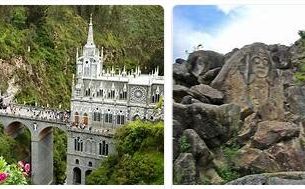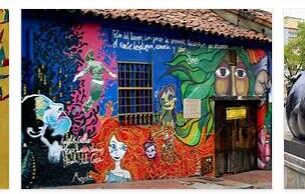According to wholevehicles, Suriname is located in the northeastern part of South America. The country has long been part of the Kingdom of the Netherlands. Suriname has been inhabited for thousands of years. The first to settle here permanently were the Surrine who were expelled here again by the Arokwans. In the centuries that followed, many different tribes settled here. At the end of the 15th century, the explorer Chistofer Columbus was the first European to sail off the coast here.
It was the explorers Amerigo Vespucci and Alonso de Ojeda who were the first Europeans to set foot here. However, it was the Dutch who came to the country several times at the end of the 16th century to get raw materials and a few years later the West India Company received the patent right in this area. In the following years, the area came into Dutch and English hands, after which the Netherlands exchanged the area with the English for New Netherland, the area where New York is now. It didn’t stop the English from conquering the area a few more times. This part is the neighboring country of Guiana that was known as British Guiana before its independence.
Over the centuries, many sugar cane plantations were built in Suriname, where thousands of slaves were put to work. Later, coffee plantations were added. The Netherlands did not abolish slavery in Suriname until 1863, as one of the last western countries in the world. However, the former slaves were obliged to continue working on the plantations for at least another ten years. Now, however, for a small fee. At the beginning of the 20th century, Suriname rubber, gold and mainly bauxite was found, which ensured a great economic growth of the country. In 1940 the first step towards an independent Suriname was taken with the result that in 1954 Suriname became an independent country within the Kingdom of the Netherlands and in 1975 Suriname became an independent republic.
The period after this can be called anything but peaceful, there have been several coups, Desi Bouterse has ruled the country for several years as a dictator and several coups have been committed. The country’s main income comes from the country’s natural resources, such as wood, bauxite, gold and china clay. However, it is a poor country and about 70% of the population lives below the poverty line.
However, many Dutch tourists come to Suriname. These are often Surinamese who live in the Netherlands and visit their family here. About 350,000 Surinamese live in the Netherlands. In December there is therefore a great demand for airline tickets to Paramaribo.
Sights
One of the most beautiful places in Suriname is Paramaribo, especially the historic center of the city with the wooden Saint Peter and Paul Cathedral, Fort Zeelandia and the Independence Square. The Cathedral of Saint Peter and Paul is one of the largest wooden structures in South America. The priest Peerke Donders is buried in the cathedral. The Open Air Museum Fort Nieuw Amsterdam is also located in Paramaribo. Just outside the city is the 1,500 meter long Jules Wijdenbosch Bridge over the Suriname River. In the Keizerstraat in Suriname, the Synagogue and the mosque stand side by side. A visit to Suriname is not complete until you have visited the beautiful interior and the Brokopondo Lake. There are still a few colonial plantations in the Commewijne district,
UNESCO
Suriname has two inscriptions on the UNESCO World Heritage List. In the year 2000, the Nature Reserve of Central Suriname was the first to be put on the list. This is the largest nature reserve of Suriname and covers about 10 percent of the total land area of the country. In 2002 the historic city center of Paramaribo was added to the list. In this city center you can find the wooden Saint Peter and Paul Cathedral, Fort Zeelandia and the Independence Square.
Climate
The largest part of Suriname has a tropical rainforest climate with a lot of precipitation throughout the year. The climate here can be divided into four seasons. Roughly speaking, these seasons consist of two rainy and two dry periods. The short rainy season here lasts from early December to January and the long rainy season from late April to mid-August. In between are two drier periods. Make no mistake, however, because even during the dry periods, there can be quite a bit of precipitation here. In total, about 2,200 millimeters of precipitation falls here on an annual basis. The daytime temperature here is just above 30 degrees Celsius all year round, during the nights it cools down about 6 to 8 degrees. Due to the large amount of precipitation and the higher temperatures, there is a high humidity in Suriname. In the higher southern part of Suriname there is on average less precipitation. As a result, some parts here have a tropical monsoon climate and other parts have a tropical savanna climate. In Suriname you have a small chance of tropical storms or hurricanes, but heavy downpours and strong wind gusts regularly occur.
Geography
Several important rivers run through Suriname, such as the Marowijne, which forms the border with neighboring French Guiana. The Suriname River rises in the Surinamese highlands and flows to the Atlantic Ocean via Lake Brokopondo and the capital Paramaribo. Other important rivers are the Commewijne, Tapanahony, Saramacca and the Coratijn. In the northern part of Suriname is a large swamp area that in some places is up to a hundred kilometers wide. The central part of the country consists mainly of forest that is threatened by heavy logging. The southern part of the country consists of several mountain ranges that all belong to the Highlands of Guyana. These mountain ranges include the Orange Mountains, the Van Asch van Wijck Mountains, the Wilhelmina Mountains, the Eilerts de Haan Mountains, the Border Mountains and the Tumuk-Humak Mountains. The highest point of Suriname with 1280 meters is the Julianatop which is located in the Wilhelmina Mountains. The capital Paramaribo is by far the largest city in the country, the places Lelydorp, Nieuw Nickerie, Moengo, Albina and Brokopondo are also worth a visit.
Travel advice
Suriname’s status has been on “be vigilant” for several years now, mainly due to the country’s high crime rate. In the area around the towns of Albina and Moengo there are some criminal gangs active. There are no mandatory vaccinations for a visit to Suriname. However, it is wise to take a DTP jab and a yellow fever vaccination before departure. In the jungle of Suriname there are mosquitoes that can transmit malaria, you cannot get vaccinated against this, but good medicines are available for this. As a prevention against this, it is wise to sleep under a mosquito net at night and to rub yourself with mosquito repellent products.
Travel documents
To be able to visit Suriname, one must be in possession of a passport that is still valid for at least 6 months and a tourist card. These tourist cards are available at the Surinamese consulate in the Netherlands, at Schiphol and at the airport in Suriname and are valid for a maximum of 90 days. The price of this card is 20 euros. You must also be in possession of a return ticket. In Suriname, possessing or trading soft and hard drugs is strictly prohibited. Travelers from Suriname are often extensively checked, this has to do with the large number of pellet swallowers that come from Suriname.
Info table
| Capital city | Paramaribo |
| Phone (country code) | 597 |
| Internet domain | .sr |
| Language(s) (official) | Dutch |
| Language(s) (colloquial) | Dutch, Surinamese, Sarnami Hindustani, Javanese, Chinese and some Marron languages |
| Religion(s) | Christianity, Hinduism and Islam |
| Time zone(s) | UTC-3 |
| Time difference summer | In Suriname it is 5 hours earlier than in the Netherlands |
| Time difference winter | In Suriname it is 4 hours earlier than in the Netherlands |
| Daylight Saving Time Control | no |
| Currencies | Surinamese dollar |




